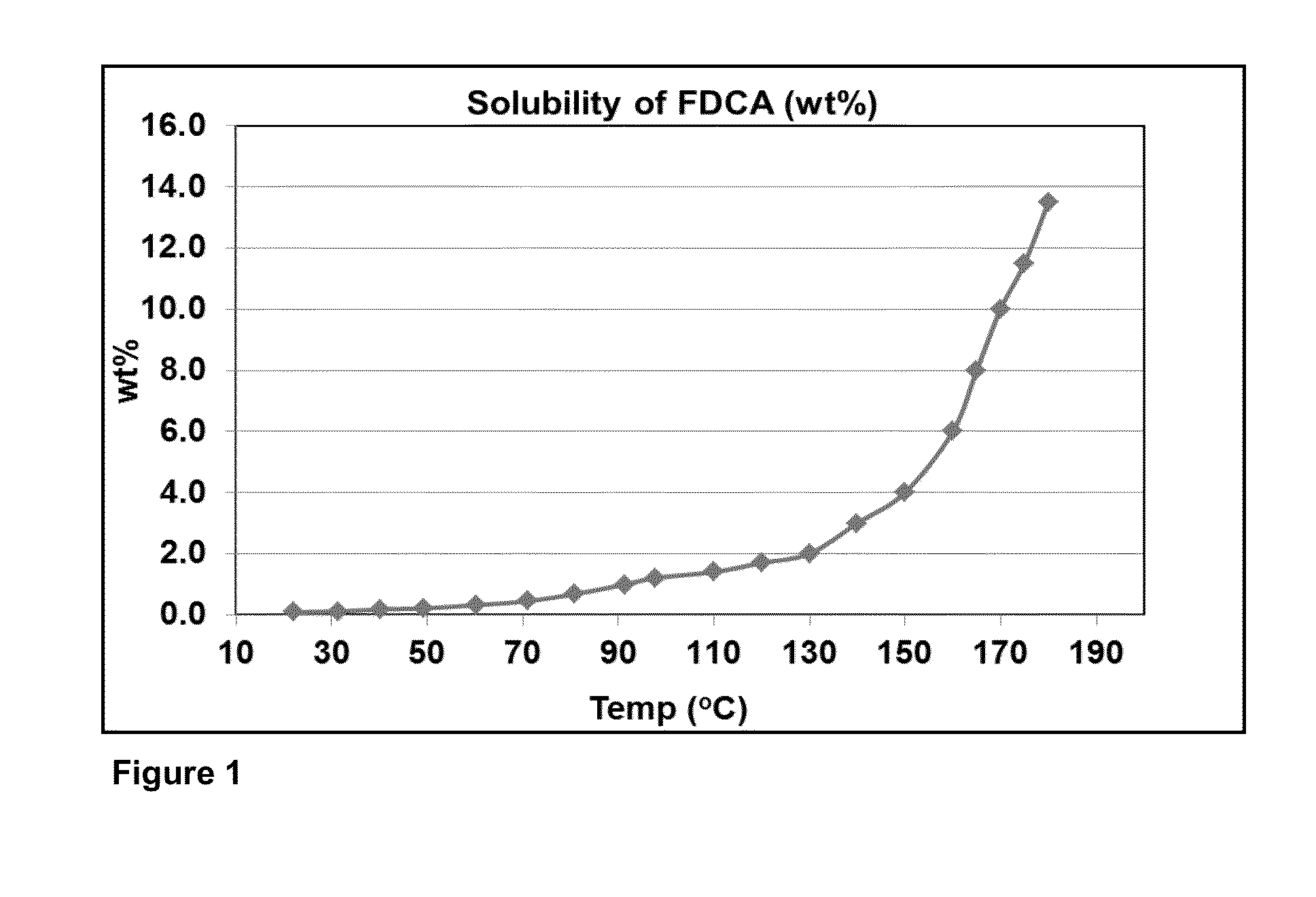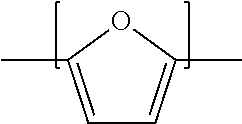Purifying crude furan 2,5-dicarboxylic acid by hydrogenation
a technology of cta and hydrogenation, which is applied in the field of purification of crude furan 2, 5dicarboxylic acid, can solve the problems of high cost of purification of cta by hydrogenation, low polymer viscosity, and undesirable monocarboxylic acid, and achieves good solubility, easy separation from fdca, and reduced energy requirements
- Summary
- Abstract
- Description
- Claims
- Application Information
AI Technical Summary
Benefits of technology
Problems solved by technology
Method used
Image
Examples
examples 1-12
[0123]In Examples 1-12 a 300 mL titanium autoclave equipped with a catalyst basket was charged with 45.0 g of crude colored FDCA (starting b* shown in Table 1) that contained some FFCA and 450.0 g of water. The catalyst basket was charged with 3 grams of a palladium / carbon catalyst containing 0.5 wt % palladium in an amount as shown in Table 1. The autoclave was sealed and heated to the desired temperature while agitating the mixture. H2 gas was introduced to attain the various hydrogen partial pressures listed in Table 1. The total pressure was maintained from a surge tank during the reaction. The reaction continued for the period of time stated in Table 1, upon which the gas supply was stopped and the autoclave was cooled to room temperature to thereby crystallize FDCA and then depressurized. The heterogeneous mixture was filtered to isolate the pFDCA. The mass of the mother liquor filtrate was recorded. The pFDCA solid was washed with 100 mL of water three times and it was oven d...
PUM
 Login to View More
Login to View More Abstract
Description
Claims
Application Information
 Login to View More
Login to View More - R&D
- Intellectual Property
- Life Sciences
- Materials
- Tech Scout
- Unparalleled Data Quality
- Higher Quality Content
- 60% Fewer Hallucinations
Browse by: Latest US Patents, China's latest patents, Technical Efficacy Thesaurus, Application Domain, Technology Topic, Popular Technical Reports.
© 2025 PatSnap. All rights reserved.Legal|Privacy policy|Modern Slavery Act Transparency Statement|Sitemap|About US| Contact US: help@patsnap.com



